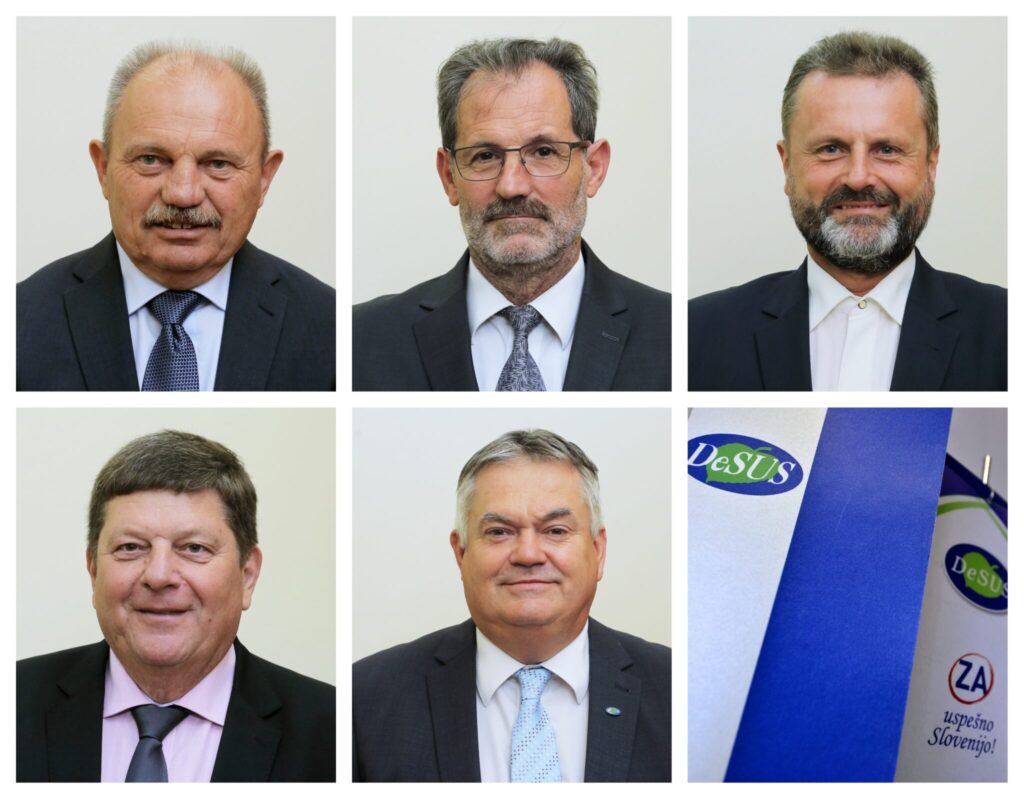According to a survey conducted by the Parsifal Agency, the coalition parties currently have more than 50 percent support among the voters, despite the strong negative campaign of the media in the hands of the left-wing political and economic currents, and political attacks by the left-wing opposition parties. If the elections to the National Assembly were held this Sunday, the highest number of the voters who would definitely participate in the election and already know who they would support would vote for the SDS party (31.7 percent), followed by LMŠ (17.4 percent), SD (12.5 percent), NSi (10.2 percent), DeSUS (8.8 percent), and the Levica party (7.7 percent). The rise in support for the Democratic Party of Pensioners of Slovenia (DeSUS) is the most noticeable, as their numbers have doubled in the week following the rejection of the president Karl Erjavec’s ultimatum to leave the coalition. Among those who already know who they would vote for, the party is enjoying as much as 11.3 percent of support.
Between the 7th and 9th of December, the Parsifal Agency conducted a public opinion poll on the support for political parties, which had some interesting results. When asked which party they would vote for, if the elections to the Slovenian National Assembly were held this Sunday, the majority of the respondents said they would vote for the SDS party, which would win the election with 27.9 percent of the votes. The SDS party is followed by LMŠ with 17.2 percent, SD with 11.8 percent, DeSUS with 11.3 percent, Levica with nine percent, NSi with 8.3 percent, SAB with 3.8 percent, and SNS with 2.1 percent. The Good State Party (Dobra Država) would receive 2.1 percent of the votes, Pirates 1.7 percent, and SMC 0.9 percent of the votes.
Among those who would definitely participate in the election, the SDS would also win, this time with 26.6 percent of the votes. The party is followed by LMŠ with 14.5 percent, SD with 10.5 percent, NSi with 8.5 percent, DeSUS with 7.3 percent, Levica with 6.4 percent, SAB 3.4 percent, Slovenska ljudska stranka and Nova ljudska stranka with 2.2 percent. Dobra Država would get 1.8 percent, Pirates would get 1.0 percent, SMC 0.9 percent, and SNS 0.6 percent of the votes.
The parties of the current coalition with more than 50 percent support, the biggest jump for the DeSUS
Among those who would definitely participate in the election and already know who they would vote for, the highest share would support the SDS party (31.7 percent), followed by LMŠ (17.4 percent), SD (12.5 percent), NSi (10.2 percent), DeSUS (8.8 percent) and Levica (7.7 percent), if the National Assembly elections were held this Sunday. Judging by the results, the coalition parties are supported by more than 51.7 percent of the respondents, and together with the Slovenian National Party (SNS), they are even supported by 52.5 percent of the respondents.
Support for the DeSUS party has almost doubled since the last public opinion poll, which was conducted in early November. While only 4.9 percent of the voters said they would support the DeSUS party in the elections back in November, the support for the party now rose to 8.8 percent in December. It is also interesting to note that the poll was conducted at a time when the president of the DeSUS party, Karl Erjavec, wanted to leave the coalition and consequently even become the new Prime Minister, but his own deputies prevented him from doing that, for which he later also apologized to them. The correlation between the constructive attitude of the DeSUS parliamentary group and the increase in public support is therefore not accidental, as it was rewarded by the voters. It should not be overlooked that the Democratic Party of Pensioners of Slovenia achieved its second-best result at the 2008 elections, after a full mandate in the centre-right coalition, during which the pensions increased by more than 20 percent.
The survey was conducted between the 7th and 9th of December 2020, and 727 respondents participated in it, of which 50.1 percent were women. The average age of the participants is 50.6 years, and the standard deviation is 15.8 years. The majority of the respondents are from the oldest age group (41.7 percent), a slightly smaller share of participants belongs to the middle age group (36.5 percent), and the smallest number of respondents is from the youngest age group (21.8 percent). The majority of the respondents have completed high school (32.9 percent), followed by those with completed high education or higher (27.0 percent), 23 percent of respondents have finished vocational school, and 17.1 percent have either completed or have not completed primary school. The majority of the respondents currently reside in a small village or hamlet (52.2 percent), followed by those who live in the city (30.9 percent) or a smaller town (16.9 percent). Most of the respondents are from Central Slovenia (26.3 percent), followed by the Podravska (16.5 percent) and Savinjska (11.8 percent) region.
Sara Rančigaj


